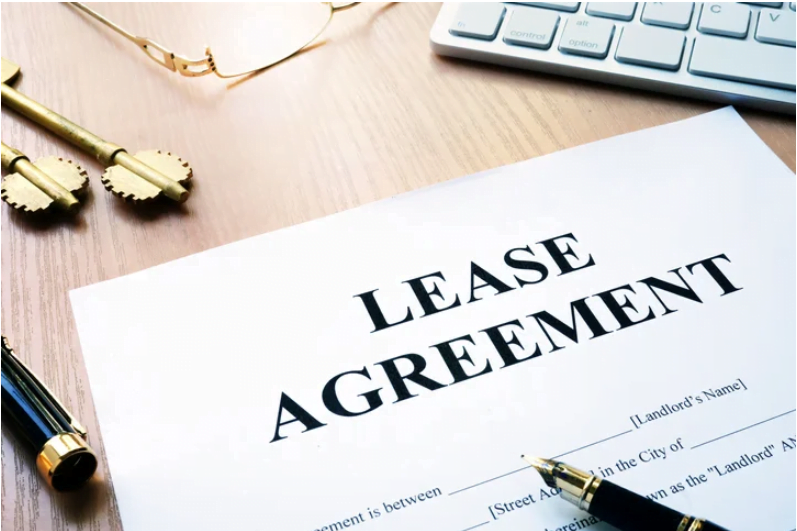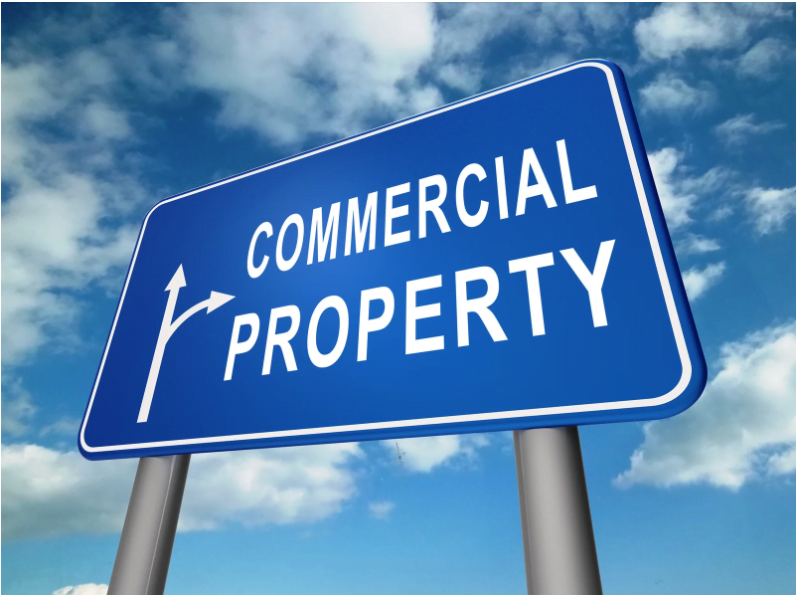
by Prince Licaylicay | Jul 9, 2020 | All Articles
A commercial lease can be long and complicated, but it’s essential to review every section carefully before signing. While every part of the lease is important, the following terms require extra attention.
Four Important Parts of a Commercial Lease
1. Length of the Lease
The length of your lease is crucial for your business. A longer lease often comes with lower monthly rent because landlords prefer stability and fewer vacancies. However, if your business needs may change soon, a shorter lease might be better. You don’t want to be stuck paying for unused space or facing hefty fees to break the lease if you need to relocate. If you choose a longer lease, including a sublease clause can help. This way, you can rent out unused space if your business needs change before the lease ends.
2. Rent and Security Deposit Terms
Naturally, the section on rent is one of the most important. Don’t just focus on the monthly rate. Check for any potential rent increases and the maximum allowed amount for these increases. Also, look at additional fees, how much of the operating costs you’ll be responsible for, and any allowances for space improvements.
Pay close attention to the security deposit. Sometimes, you may be able to negotiate and avoid a deposit altogether by providing a letter of credit from a bank.
3. Premises Terms
Many business owners overlook the premises section, but it’s vital. This part details exactly what you’re renting. If you’re only renting part of the building, make sure the lease specifies access to parking and shared spaces like storage rooms, lobbies, or conference areas.
4. Use Terms
The use terms outline restrictions that could impact your business. Make sure there are no limits on the types of operations you can conduct. Sometimes, other tenants may have exclusive clauses that prevent competitors from being in the same building. These restrictions could limit your ability to expand into new business areas in the future. This section will also clarify what kind of signage or advertising is allowed on the premises.
Final Thoughts
Remember, the initial lease draft usually favors the landlord. However, you are not obligated to accept everything as-is. Landlords expect negotiations, so don’t hesitate to request better terms that benefit both parties.
Need assistance with your 1031 Exchange or DST? We’ve got you covered!
We’ve prepared a comprehensive, free e-book designed to guide you in achieving your long-term business goals or acquiring that dream property you’ve been eyeing.

Meet The LeveragedCRE Investment Team
Phill Tomlinson and Eric Butler are seasoned commercial real estate brokers with over 44 years of combined experience. They lead the LeveragedCRE Investment Team at Commercial Properties, Inc. (CPI) in Scottsdale, Arizona, specializing in investment sales and tenant/landlord representation across the Phoenix and Scottsdale submarkets.
The team leverages their extensive knowledge and expertise to help investors and property owners maximize their returns and navigate complex real estate transactions with confidence.
Stay informed with the latest in Commercial Real Estate strategies designed to enhance your income property investment results by bookmarking www.leveragedcre.com. Let us help you stay ahead in the market!

by Phill Tomlinson | Jul 1, 2020 | All Articles
When should you start looking for a new commercial office space? Typically, companies start looking for a new commercial office space as little as nine months before their existing lease ends. Unfortunately, they’re doing it wrong. To successfully find and negotiate space. The savviest tenants can spend two to three years planning for a move.
Step 1: Determining Your Space’s Suitability
The first step in looking for new space is to step back and look at your existing space. Sometimes, there’s nothing wrong with your existing commercial real estate that a few nips and tucks won’t fix. If your existing space basically works and your rent is at market, staying is usually cheaper and easier on your business due to avoiding the interruptions caused by moving.
If you decide that it makes sense to look at a new space, the first step is to find someone to help you with the process. A professional tenant rep can save you time by helping with every step in the process while also delivering better results due to his high level of expertise and access to special tools.nnUsually, your first step is to go back to the broker that brought you to your current space. However, the market is always in flux, and it’s also a good idea to reach out to other brokers that are active in your area. Talk to similar companies to see who they have used in the past, as well.
Step 3: Researching Markets and Submarkets
The site selection process can be the most time-consuming step in finding a new piece of commercial real estate to occupy unless you are absolutely sure that you want to stay in the same general area. Barring that, you will want to study demographics and economics, conduct site visits, and really find the perfect place for your business. Even with a commercial real estate broker’s help, this process can easily take six months, especially when you factor in travel.
Step 4: Discussing with Your Existing Landlord
Once you generally know what you want, it’s time to sit down with your landlord. You will probably still have 18 or so months left on your lease at this point, but it’s still a great time to have a discussion. One possibility is that your landlord might be willing to sweeten the pot to keep you. Another is that they might want to get you out sooner to accommodate another tenant. In a worst case scenario, you waste an hour but you still retain all of the rights you have under your lease.
Step 5: Touring a New Commercial Office Space
Once you know that you’re moving, it’s time to start seriously looking at spaces. Your commercial real estate broker can help facilitate this entire process by finding potential sites and by arranging your tour. This process can usually take a few months.
Step 6: Negotiating and Signing
Once you’ve found the perfect space and a couple of backups, it’s time to start the negotiation process. The process’ speed varies based on your market, but it’s best to earmark a couple of months so that you aren’t rushed into taking an unsuitable offer.
Step 7: Building the New Space Out
Finally, you have to wait for your space to be built out and for all of its systems to be installed. Even simple build outs can take 60 or more days.
Optional Step: When Bad Things Happen to Good Commercial Real Estate
To really be safe, wise tenants build a few extra months into their schedule. That way, if something goes wrong, they still have some extra time
Need assistance with your 1031 Exchange or DST? We’ve got you covered!
We’ve prepared a comprehensive, free e-book designed to guide you in achieving your long-term business goals or acquiring that dream property you’ve been eyeing.

Meet The LeveragedCRE Investment Team
Phill Tomlinson and Eric Butler are seasoned commercial real estate brokers with over 44 years of combined experience. They lead the LeveragedCRE Investment Team at Commercial Properties, Inc. (CPI) in Scottsdale, Arizona, specializing in investment sales and tenant/landlord representation across the Phoenix and Scottsdale submarkets.
The team leverages their extensive knowledge and expertise to help investors and property owners maximize their returns and navigate complex real estate transactions with confidence.
Stay informed with the latest in Commercial Real Estate strategies designed to enhance your income property investment results by bookmarking www.leveragedcre.com. Let us help you stay ahead in the market!

by Prince Licaylicay | Jul 1, 2020 | All Articles, Buying, Exchanges (1031 & DST), Investing, Selling
A 1031 tax-deferred exchange can be a great tool for investors to defer taxes, but it’s important to follow the rules closely. Here are ten key points to keep in mind when considering this type of exchange.
A §1031 exchange applies only to investment properties. This includes land, commercial properties, or residential properties that are rented out. Personal residences or vacation homes do not qualify.
2. The Role of a Qualified Intermediary (QI)
To complete a §1031 exchange, you must use a Qualified Intermediary (QI). The QI acts as the “safe harbor” for your funds during the exchange process.
3. Spend Equal to Your Sale Price
In order to achieve 100% tax deferral, you need to spend an amount equal to or greater than the sale price of your relinquished property, minus customary closing costs. Any amount below this will be subject to taxes on the gain.
4. Understanding Like-Kind Properties
The IRS defines “like-kind” simply as anything held for investment purposes. This means you can buy or sell land, residential, or commercial properties, and they will all qualify as like-kind. You can also sell one property and buy multiple in return.
5. Strict Timeframes for Identification and Closing
The timeframes in a 1031 exchange are fixed and cannot be extended. You have 45 days from the sale’s closing date to identify the replacement property and 180 days to close on it. Keep in mind that the 45 days are part of the 180-day period.
6. Avoid Giving Buyer Credits
If you give buyer credits, these could be considered unallowable expenses under IRS rules. If audited, such credits may be classified as Boot (taxable cash). To avoid this, consider lowering the sales price instead of offering credits to the buyer.
7. Access to Funds Under 1031(g)(6) of the IRC
Once you identify a replacement property and pass the 45-day mark, you won’t have access to your funds if you don’t close on that property. Your funds will be locked for the full 180 days. This is why it’s crucial to work with a QI who can clearly explain these restrictions.
8. Restrictions on Family Transactions
If you’re buying from or selling to a family member (parents, children, siblings), there’s a two-year hold rule under related party guidelines. Both parties must hold the properties for at least two years, or the IRS could disqualify your exchange in an audit.
9. Be Cautious When Choosing an Accommodator
The exchange industry is not regulated, meaning anyone can claim to be an Accommodator. This lack of regulation is risky, so choose a nationwide company with financial stability to protect your funds.
10. Timing of the Exchange Agreement with a QI
Most importantly, you must be in an exchange agreement with a QI before closing on your relinquished property. If the agreement is not in place before the sale, you cannot defer any gains when you purchase your replacement property.
Sheila Long
Regional Sales Executive
Old Republic Exchange Company
C: 480.341.2032
T: 480.443.6830 -AZ
E: SheilaL@oldrepublicexchange.com
Need assistance with your 1031 Exchange or DST? We’ve got you covered!
We’ve prepared a comprehensive, free e-book designed to guide you in achieving your long-term business goals or acquiring that dream property you’ve been eyeing.

Meet The LeveragedCRE Investment Team
Phill Tomlinson and Eric Butler are seasoned commercial real estate brokers with over 44 years of combined experience. They lead the LeveragedCRE Investment Team at Commercial Properties, Inc. (CPI) in Scottsdale, Arizona, specializing in investment sales and tenant/landlord representation across the Phoenix and Scottsdale submarkets.
The team leverages their extensive knowledge and expertise to help investors and property owners maximize their returns and navigate complex real estate transactions with confidence.
Stay informed with the latest commercial real estate strategies designed to enhance your income property investment results by bookmarking www.leveragedcre.com. Let us help you stay ahead in the market!

by Prince Licaylicay | Jul 1, 2020 | All Articles, Leasing
When should you start looking for a new commercial office space? Typically, companies start looking for a new commercial office space as little as nine months before their existing lease ends. Unfortunately, they’re doing it wrong. To successfully find and negotiate space. The savviest tenants can spend two to three years planning for a move.
Step 1: Determining Your Space’s Suitability
The first step in looking for new space is to step back and look at your existing space. Sometimes, there’s nothing wrong with your existing commercial real estate that a few nips and tucks won’t fix. If your existing space basically works and your rent is at market, staying is usually cheaper and easier on your business due to avoiding the interruptions caused by moving.
Step 2: Finding a Commercial Real Estate Broker
If you decide that it makes sense to look at a new space, the first step is to find someone to help you with the process. A professional tenant rep can save you time by helping with every step in the process while also delivering better results due to his high level of expertise and access to special tools.
Usually, your first step is to go back to the broker that brought you to your current space. However, the market is always in flux, and it’s also a good idea to reach out to other brokers that are active in your area. Talk to similar companies to see who they have used in the past, as well.
Step 3: Researching Markets and Submarkets
The site selection process can be the most time-consuming step in finding a new piece of commercial real estate to occupy unless you are absolutely sure that you want to stay in the same general area. Barring that, you will want to study demographics and economics, conduct site visits, and really find the perfect place for your business. Even with a commercial real estate broker’s help, this process can easily take six months, especially when you factor in travel.
Step 4: Discussing with Your Existing Landlord
Once you generally know what you want, it’s time to sit down with your landlord. You will probably still have 18 or so months left on your lease at this point, but it’s still a great time to have a discussion. One possibility is that your landlord might be willing to sweeten the pot to keep you. Another is that they might want to get you out sooner to accommodate another tenant. In a worst case scenario, you waste an hour but you still retain all of the rights you have under your lease.
Step 5: Touring a New Commercial Office Space
Once you know that you’re moving, it’s time to start seriously looking at spaces. Your commercial real estate broker can help facilitate this entire process by finding potential sites and by arranging your tour. This process can usually take a few months.
Step 6: Negotiating and Signing
Once you’ve found the perfect space and a couple of backups, it’s time to start the negotiation process. The process’ speed varies based on your market, but it’s best to earmark a couple of months so that you aren’t rushed into taking an unsuitable offer.
Step 7: Building the New Space Out
Finally, you have to wait for your space to be built out and for all of its systems to be installed. Even simple build outs can take 60 or more days.
Optional Step: When Bad Things Happen to Good Commercial Real Estate
To really be safe, wise tenants build a few extra months into their schedule. That way, if something goes wrong, they still have some extra time
Need assistance with your 1031 Exchange or DST? We’ve got you covered!
We’ve prepared a comprehensive, free e-book designed to guide you in achieving your long-term business goals or acquiring that dream property you’ve been eyeing.

Meet The LeveragedCRE Investment Team
Phill Tomlinson and Eric Butler are seasoned commercial real estate brokers with over 44 years of combined experience. They lead the LeveragedCRE Investment Team at Commercial Properties, Inc. (CPI) in Scottsdale, Arizona, specializing in investment sales and tenant/landlord representation across the Phoenix and Scottsdale submarkets.
The team leverages their extensive knowledge and expertise to help investors and property owners maximize their returns and navigate complex real estate transactions with confidence.
Stay informed with the latest in Commercial Real Estate strategies designed to enhance your income property investment results by bookmarking www.leveragedcre.com Let us help you stay ahead in the market!






